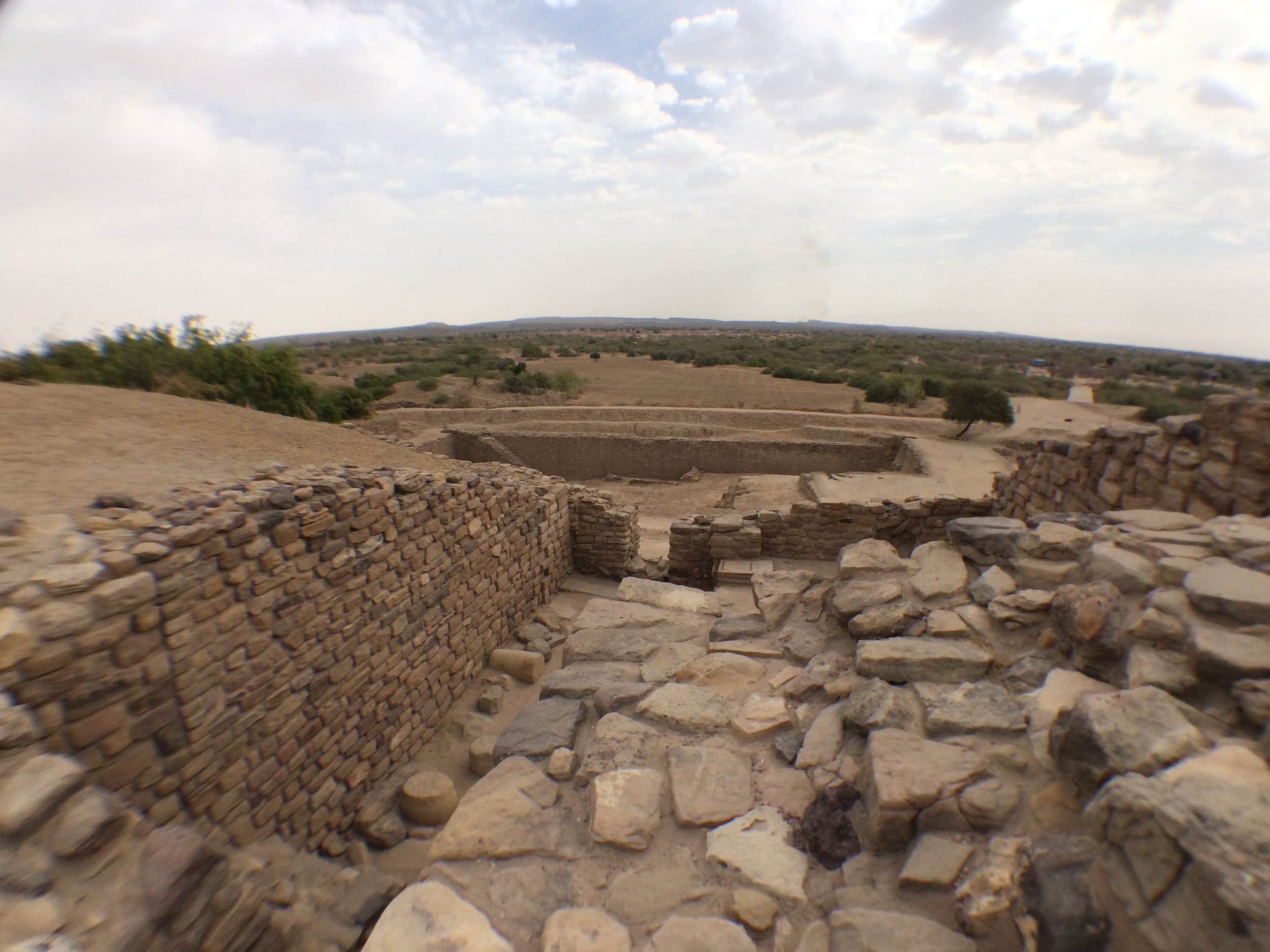Dholavira
Excavated city of the Ancient Indus Valley Civilisation
Where better to start than at the very cradle of civilisation, around 3500 BCE, when a peaceful river-valley civilisation flourished for over 2000 years along the various tributaries of the River Indus. Famed for its impeccable town planning and sophisticated water harvesting system, the Indus people also had trading links reaching Ancient Mesopotamia. At least 150 Indus Valley cities have been uncovered: the first discovery was made at Harrappa in the 1920s, shortly followed by Mohenjo-Daro - the largest city, both found in Pakistan. Dholavira, here in Kutch, was another important centre.
Dholavira is located on a small island that rises out of the vast salt flats of the Great Rann. Excavation began in the 1990s, thirty years after its discovery. Though thought to be only 25% uncovered, it already reveals a complex irrigation system with huge water tanks flanking the citadel and lower town, harvesting from a river that eventually changed its course. Carved-stone seals, terracotta pottery and bronze vessels are among the many antiquities unearthed, but the most exciting discovery is a prominent inscription of the undeciphered Indus glyphs on what appears to be the world's earliest signboard.
Interpretation of the site is basic; some of the antiquities are on display, but the most significant are now in Delhi. What makes the experience so special is allowing your imagination to run wild while you stand on this ancient land - very often with it all to yourself - and marvel at the human ingenuity that took place 5000 years ago.
Mandvi
TRADITIONAL SHIPBUILDING, ROYAL SUMMER PALACE & BEACH
Founded in 1580, the quaint, coastal town of Mandvi was once an important and prosperous maritime trade centre. Originally fortified, the town was the summer retreat of the Maharao and home to some of the bravest and most entrepreneurial seafarers the world has seen.
The moment you cross the bridge where the Rukmavati River meets the Gulf of Kutch, you are immediately struck by a number of huge, wooden ribcages strung along the water's edge: Mandvi's 400-year-old, handmade shipbuilding industry, a sight suspended in time. You are welcome to watch and admire these master craftsmen as they curve the wood into a water-tight vessel fit for life on the ocean.
A further 8km brings you to the Royal Vijaya Vilas Palace with its secluded, private beach - accessible for a small fee. The sandstone palace, built in the 1920s, is a harmonious blend of Rajput- and Bengal-style domes, columns, cupolas, and intricately carved jalis, jharokhas and murals. Vijaya Vilas is a popular venue for the Bollywood film industry, including the epic, Lagaan.
The private beach offers a peaceful opportunity to walk out along the white sands and take a dip in the Arabian Sea. If you visit outside of the weekend, you may find your only other company is a wandering dog.
Lakhpat
THE ABANDONED PORT CITY OF RICHES
Located on the edge of the Great Rann, as far west as the Border Security Forces will allow you, is the ghost town of Lakhpat. Once a flourishing port of wealthy, powerful merchants and famous religious leaders passing through, it is now in ruins. The 1819 earthquake caused the Indus River to shift its course, leading to the instant demise of Lakhpat as a port. In one year, 50% of its people had moved away. Today, around 500 people remain within the impressive 7-kilometre-long fortress.
A walk through this abandoned, fortified landscape, with its curious relics and the desolate Rann stretching into the horizon, conjures up mesmerising images and emotions. Prominent, half-standing houses vaguely line what would have once been a thriving bazaar. Wild desert scrub has begun to reclaim it all. The Sikh Gurudwara has been well preserved and is a must-visit, along with the exquisitely carved tomb of Pir Ghosh Mohammed.
Other places of historic significance include:
Roha Fort
Than Monastery
Fossil Park
Tera Fort















